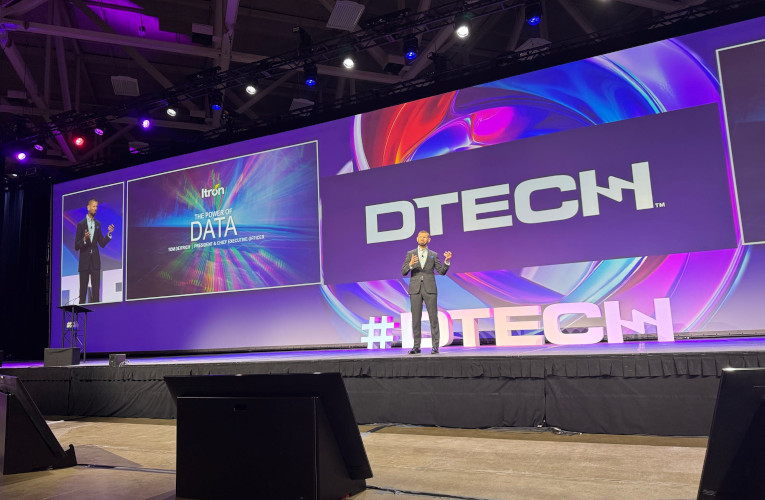
Industry Insights
The Grid Won’t Wait: Building the Business Case for Grid Resilience
More than 70% of the U.S. power grid is over 25 years old and quickly running out of usable lifespan. Infrastructure is aging, extreme weather events are intensifying and cyber threats are becoming more sophisticated. These factors, coupled with increased energy demand, make proactive investment in resilience not just a safeguard, but a strategic imperative.
In the past five years, the average annual cost of billion-dollar disasters has more than doubled compared to the average over the last 45 years. The reality is clear: utilities must act now to strengthen grid resilience. The business case for investment is stronger than ever, as waiting will only increase costs, risks and customer impacts. Here’s how utilities can justify resilience investments today—and avoid paying a far higher price when disaster strikes in the future.
The Role of Federal Funding in Grid Resilience
Federal funding has been an accelerant for utilities in strengthening infrastructure, improving reliability and enhancing disaster response capabilities since the 1970s. Grants and financial assistance programs help utilities accelerate the deployment of advanced technologies, making resilience upgrades more accessible and scalable.
Programs like the DOE’s Grid Resilience and Innovation Partnership (GRIP) and FEMA’s Building Resilient Infrastructure and Communities (BRIC), for example, have been instrumental in driving grid hardening efforts. These initiatives have supported investments in smart grid technologies, wildfire mitigation, cybersecurity protections and distributed energy resource integration, all of which are essential to ensuring a more reliable and resilient grid.
One of the most notable examples of federal funding driving resilience improvements occurred after Hurricane Sandy in 2012. As one of the costliest storms in U.S. history, it left over 8 million people in the dark and inflicted billions in damages to energy infrastructure. In response, the federal government allocated more than $50 billion for recovery and resilience efforts, helping utilities deploy flood-resistant substations, underground power lines and microgrids. These measures continue to reduce outage durations and improve grid stability today.
Making the Case for Grid Investments
While external funding remains uncertain, utilities can take decisive steps to justify resiliency investments today:
1. Quantify the Cost of Inaction
Delaying resilience investments comes at a price. Every major outage, storm-related failure or cyberattack translates into direct financial losses. The numbers speak for themselves:
- The U.S. economy loses an estimated $150 billion annually due to power outages, driven by extreme weather and infrastructure failures.
- Cyberattacks on utilities increased 60% from 2020 to 2022, with threats ranging from ransomware attacks to attempts to disrupt grid operations. A single breach can result in millions in financial losses and jeopardize public safety.
- Every $1 spent on infrastructure resilience and preparedness saves communities $13 in damages, cleanup costs and economic impact.
Beyond direct losses, utilities risk regulatory fines for failing to meet reliability standards, along with reputational damage that can erode customer trust.
2. Demonstrate ROI and Cost Recovery
Resilience investments aren’t just about risk mitigation; they deliver measurable financial benefits through improved efficiency and reliability. Utilities need to emphasize the tangible return on investment (ROI) to support modernization efforts:
- Advanced metering infrastructure (AMI) reduces operational costs by providing real-time outage data, minimizing unnecessary truck rolls and accelerating restoration times.
- Distribution automation enhances fault detection and isolation, significantly reducing downtime and lowering the cost per outage event.
- Predictive maintenance enabled by sensors and analytics extends asset life, preventing costly emergency repairs and reducing unplanned downtime.
Utilities can explore various cost-recovery mechanisms such as rate adjustments, performance-based incentives and public-private partnerships to ensure the financial investment is manageable and that the benefits are equitably shared among stakeholders.
3. Leverage Data and Predictive Analytics
In today’s digital landscape, data is essential to effective resilience planning. Solutions like artificial intelligence (AI), maching learning (ML), AMI and predictive analytics provide utilities with a proactive approach to risk management, allowing them to make smarter, data-driven investment decisions.
- Real-time grid visibility enables utilities to monitor infrastructure health and identify weak points before failures occur.
- Predictive maintenance insights help utilities anticipate equipment failures, reducing unplanned outages and extending asset lifespan.
- Resilience modeling simulates different investment scenarios, allowing utilities to quantify the impact of upgrades and prioritize projects with the highest return.
With AI-powered solutions, utilities can shift from reactive maintenance to proactive resilience strategies, ultimately reducing costs and enhancing service continuity.
The Time to Act is Now
Department of Energy Secretary, Chris Wright, said it best in his opening statement at his confirmation hearing where he called for the U.S. to “lead the world in innovation and technology breakthroughs.” He also called the resiliency of the country’s electric grid “the most urgent issue today.” Itron agrees. Utilities and their communities cannot afford to wait as aging utility infrastructure continues to age towards its designed lifespan, and the risk of failure escalates. By quantifying the cost of inaction, demonstrating ROI and leveraging data-driven strategies, utilities can make a compelling case for resilience investments—with or without government subsidies. The sooner utilities act, the better prepared they’ll be for the challenges ahead.
For questions related to federal funding, reach out to Liz Thompson, business growth manager. Explore additional insights and related blogs here.




